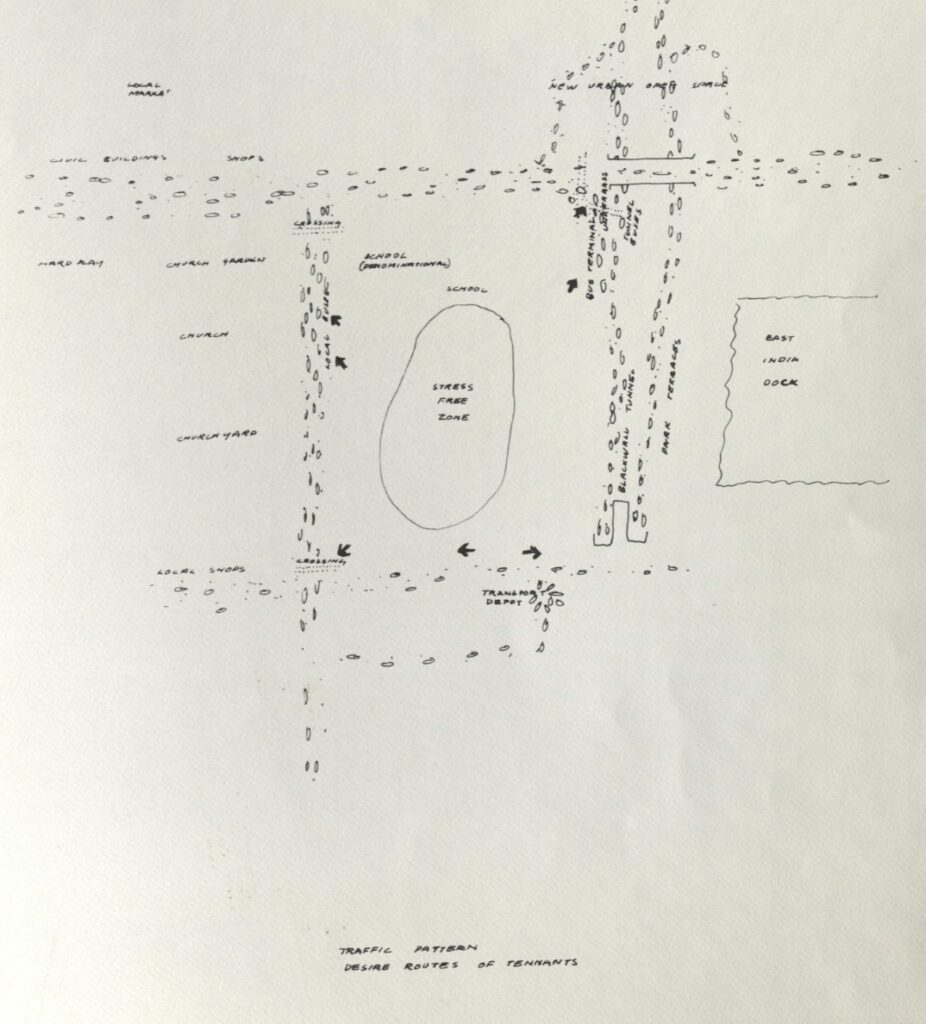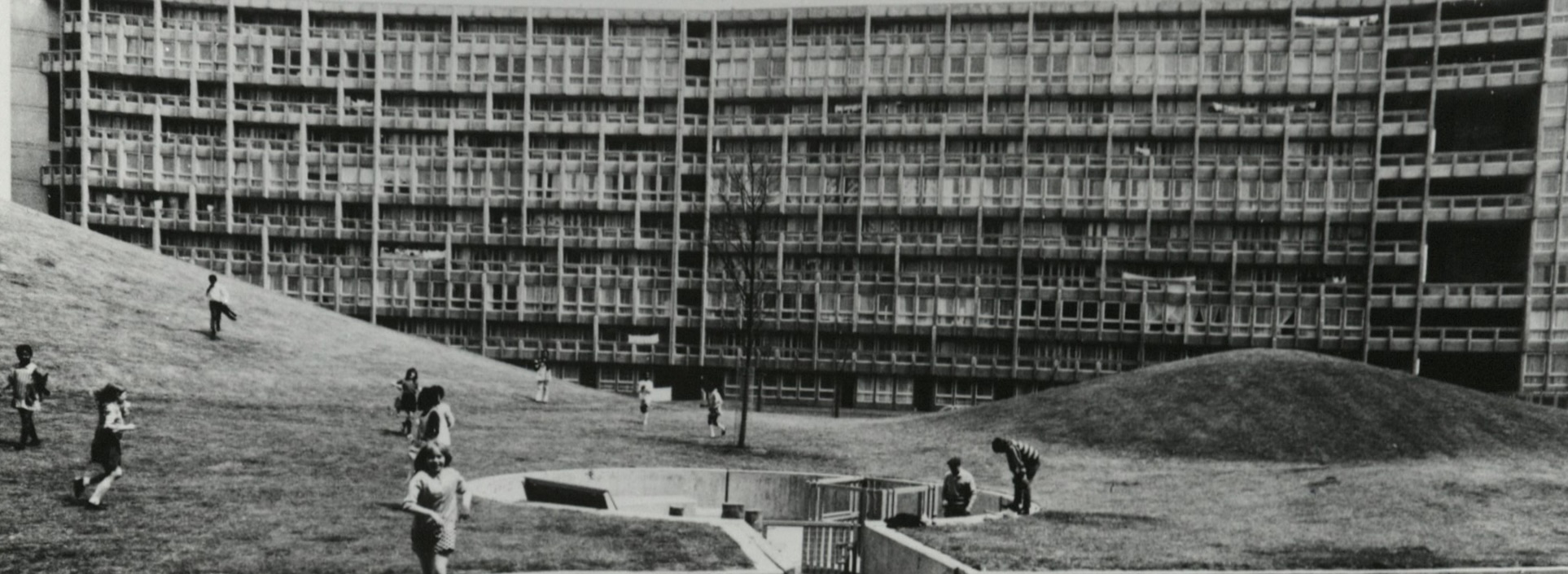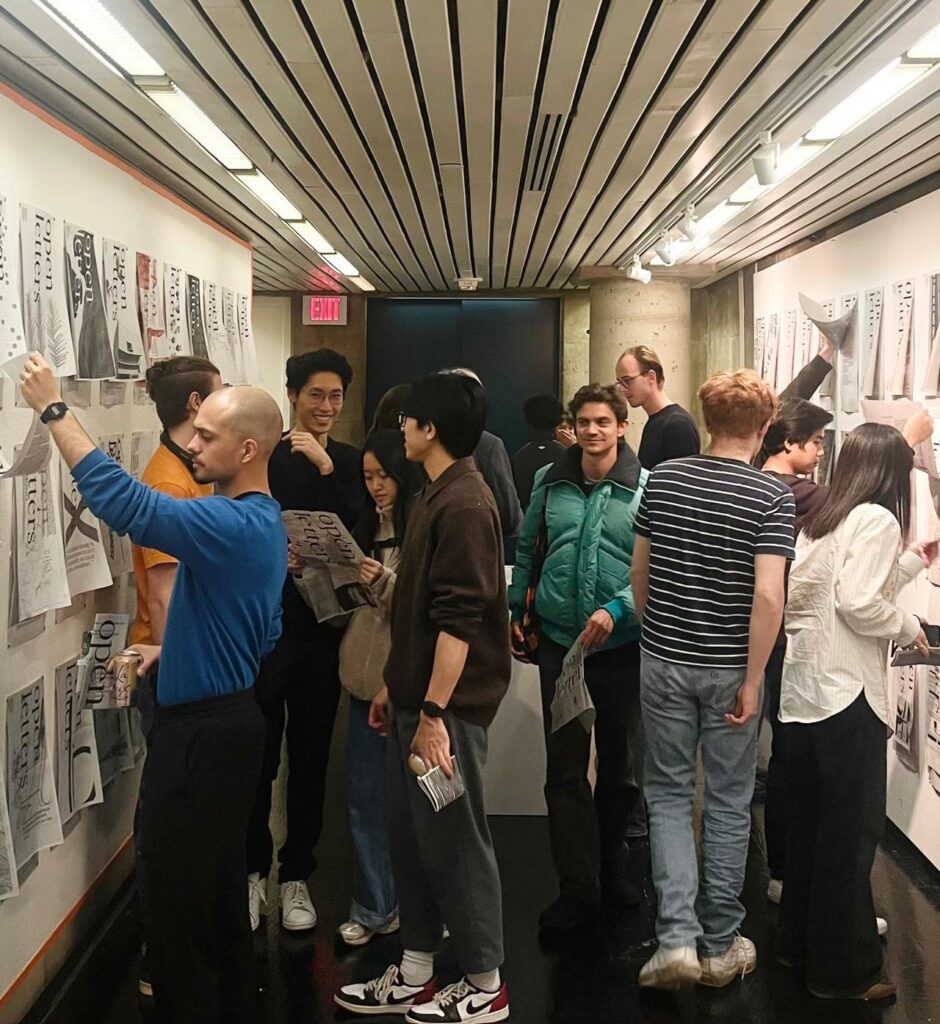In 1970, Peter Smithson made the lofty promise that, at Robin Hood Gardens , the social housing complex he and his wife, Alison, designed, “you’ll be able to smell, feel, and experience the new life that’s being offered .” Two years later, the complex was complete, spanning two city blocks, with so-called “streets in the sky” that gave residents access to community, expansive views, and sunlit apartments—at least, that was the hope.

The detailed documentation the pair made of the site, with early sketches and photographs, as well as drawings and plans made throughout the design and construction process, can be viewed in the Frances Loeb Library’s Smithson Collection , the only publicly-accessible repository of the couples’ life work. Selections from the collection have been utilized for a wide range of scholarship activities, from books to exhibitions, including, last fall at the GSD, “Towards a Newer Brutalism: Solar Pavilions, Appliance Houses, and Other Topologies of Contemporary Life,” curated by Emmett Zeifman, a former GSD faculty member. Zeifman writes that the Smithsons understood new brutalism as “an ethic, not a style,” and hoped to “meet the changing needs and desires of postwar society through an architecture that directly expressed the material conditions of its time.”
In addition to offering a historical framework for understanding architecture today, the Smithson collection holds never-before-published drawings, photographs, sketches, and ephemera that bear testimony to more than fifty years of their vocation, including their philosophy of seamlessly integrating family life with work. There’s a landscape design by their twelve year old daughter, Soltana, for example, and childrens’ book manuscripts the couple co-wrote, along with pedagogical materials about the historical significance of Christmas imagery. “Innocent imagination, children’s books, and the responsibility of the architect,” writes M. Christine Boyer in Not Quite Architecture: Writing Around Alison and Peter Smithson , which draws from the library’s collection, “are continuously intermeshed in the Smithson’s writings…”

The Smithsons’ utopian design of Robin Hood Gardens, with its central hill created for children’s play, protected by a building made to support families in community, ended in controversy. While some residents advocated for the rich sense of connection facilitated by the “streets in the sky,” others argued that they became ideal tucked-away passages for crime. After decades of neglect, the dilapidated building was demolished starting in 2017, with the final portion completed in March of this year, though the V&A Museum preserved a small portion for its collection.
The Smithsons’ legacy, however, and their dreams of the benefits of social housing, helped propel forward the conversation around how to best ensure safe, affordable housing for all. The GSD, in partnership with the Joint Center for Housing Studies , has long addressed issues around social housing, expanding affordable housing access in the face of the climate crisis, and centering care in housing—some of the same threads of thought that led the Smithsons to build the iconic, if ultimately flawed, Robin Hood Gardens.

